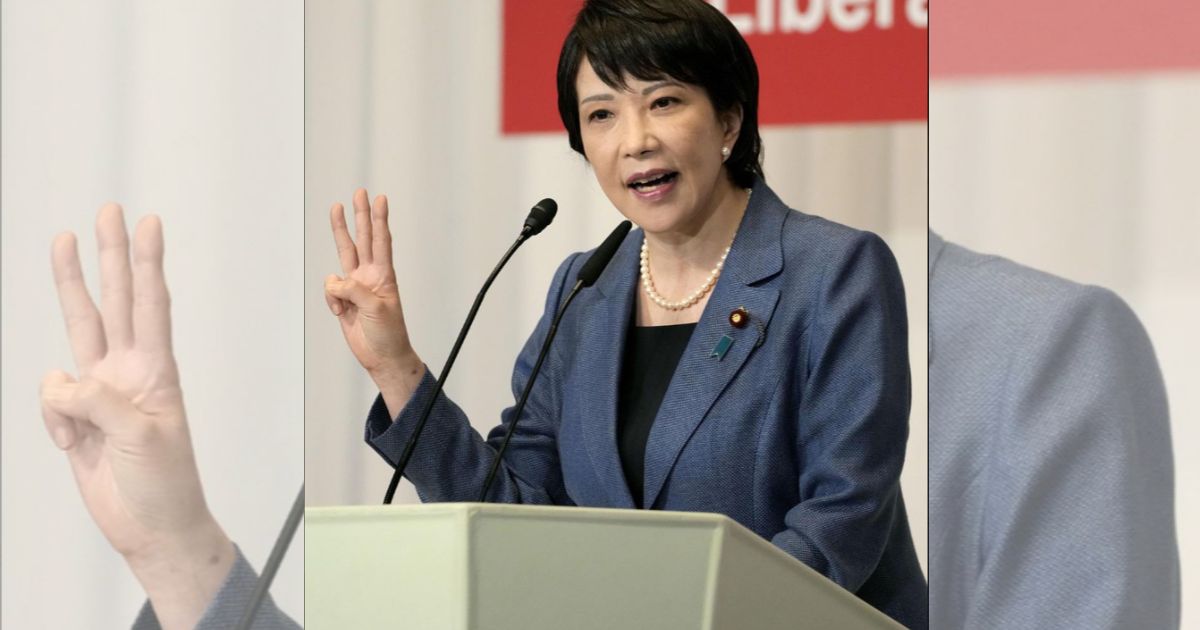Japan’s ruling Liberal Democratic Party elected former Economic Security Minister Sanae Takaichi as its new president on 4th October setting the stage for her to become the nation’s first female prime minister.
In a nation ranked low globally on gender equality, Takaichi would be the first woman to head Japan’s long-ruling conservative Liberal Democratic Party. She is among the most conservative of the party’s traditionally male-dominated members.
Takaichi defeated Agriculture Minister Shinjiro Koizumi, son of popular former Prime Minister Junichiro Koizumi, in a runoff in an intraparty election by the LDP on Saturday.
Takaichi succeeds Prime Minister Shigeru Ishiba as the party seeks to regain popular support and remain in power following heavy election losses.
She is poised to become Japan’s next prime minister since the party is still well over twice as large as its closest rival in the lower house, which elects the national leader, and since opposition forces are very much splintered.
The LDP, whose unbroken run of losses in parliamentary votes over the last year has put it in the minority in both chambers, hopes to choose a leader who is able to expedite solutions to problems within and beyond Japan, while attempting to collaborate with major opposition forces to enact policies.
Five contenders – two incumbent ministers and three former ministers – were competing for the LDP presidency.
The Saturday vote was only among 295 LDP parliamentarians and roughly 1 million paying members. It represented only 1 percent of the Japanese public.
A parliamentary vote in mid-October is anticipated. The LDP, which has come under attack by opposition leaders for creating a long political vacuum, must move fast as the winner will soon be tested diplomatically: a potential summit with US President Donald Trump, who may insist that Japan boost its defense budget.
A late October meeting is said to be in the works. Trump is set to attend the Asia-Pacific Economic Cooperation summit in South Korea on October 31.
The LDP also requires assistance from the opposition, which it has previously ignored. The party will most likely turn to bolstering its existing coalition with the centrist moderate Komeito, with one of the main opposition parties, which are themselves more centrist.
They all claimed to be “moderate conservatives” in order to demonstrate that they were willing to cooperate with the opposition.
They all ran on policies to fight inflation and secure higher pay rises, to beef up defence and the economy, and for more stringent measures against foreign workers. They avoided contentious liberal social issues like gender equality and sexual diversity.
They claimed they did not touch upon their common political positions on such historical matters, like same-sex marriages and other divisive issues, as the party’s political funds scandal, which had been the primary cause of their election defeats, as well as anti-corruption policies. By steering clear of these topics, questions about the party regaining people’s trust were raised, experts said.
Previous polls had Koizumi, Takaichi, and Chief Cabinet Secretary Yoshimasa Hayashi, a moderate veteran politician, as favorites. Two others, Trade Minister Toshimitsu Motegi and Economic Minister Takayuki Kobayashi, were perceived as less likely candidates. Koizumi would have been the youngest prime minister in over a century if he had been elected.




